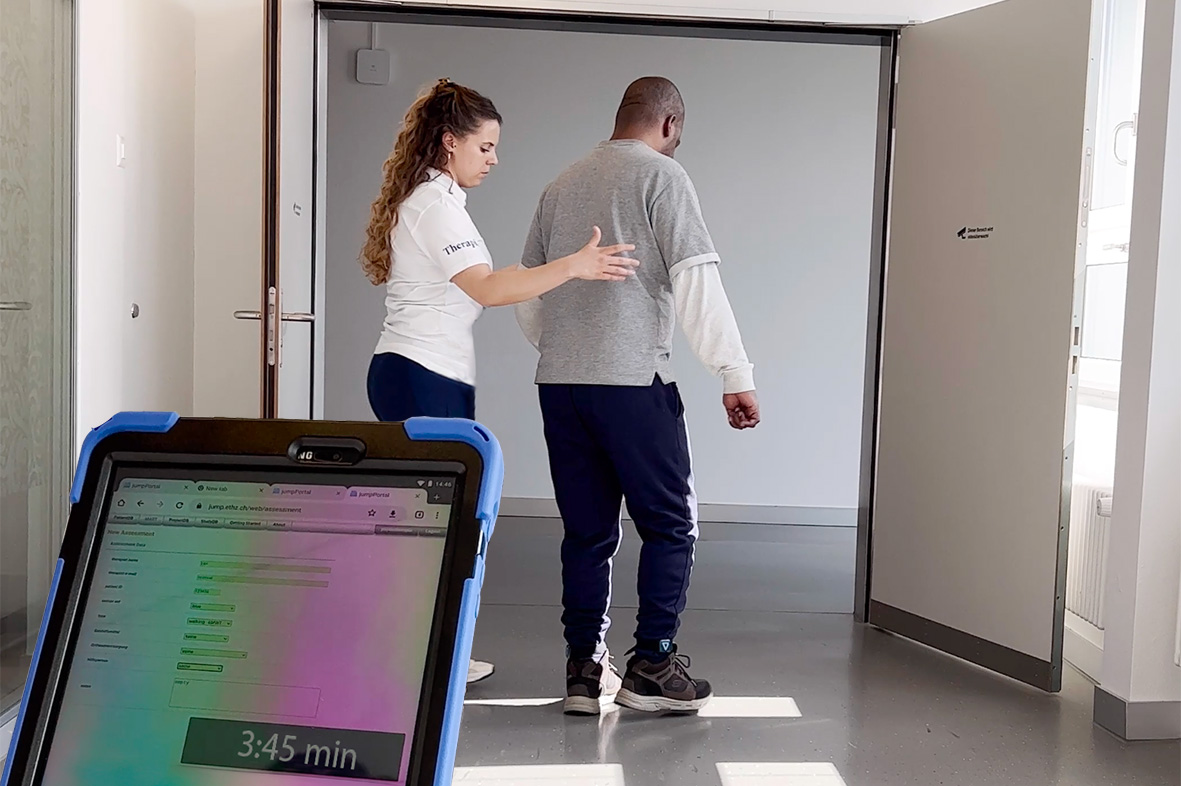Research in Paraplegiology
Changing Neurological Gait Rehabilitation with Sensor Technology
In rehabilitation, the ideal outcome assessment should identify the structural or functional mechanisms responsible for the observed behavioural changes. However, performance improvements can result from either recovery or compensatory mechanisms. To date, established outcome measures in clinical settings often do not take into account how functional improvements are achieved because they do not assess compensatory behaviours or assistive technologies that may mask the true effects of therapeutic interventions.
The integration of inertial measurement unit (IMU) technology into gait analysis is therefore a major innovation in the rehabilitation of people with neurological gait disorders. Using sophisticated algorithms, IMU devices off er unparalleled precision and objectivity, providing quantifiable data on key gait parameters even in individuals with severe gait impairments. This facilitates the development of highly personalized rehabilitation programs and increases the eff ectiveness of treatment.
In addition, the portability and cost-effectiveness of IMU technology enables access to advanced gait diagnostics, extending its benefits to remote populations. As such, the use of IMU technology in gait analysis is a major advancement that promises to improve the quality and accessibility of care for people with neurological gait disorders, marking a signifi cant step towards the future of personalised and preventative healthcare.

Verbesserung der Gangrehabilitation mit Sensortechnologie
In der Neurorehabilitation sollte ein Assessmenttool die grundlegenden Mechanismen hinter einer Leistungsänderung erfassen können. Die etablierten klinischen Assessments in der Gangrehabilitation können jedoch nicht unterscheiden, ob eine Verbesserung durch Erholung oder durch Kompensation zustande kommt. Inertialsensoren (IMUSensoren) können diese Lücke schliessen. Sie ermöglichen eine präzise, objektive und einfache Erfassung der Kinematik und liefern quantifi zierbare Daten zu wichtigen Gangparametern. Dies ermöglicht die Entwicklung von Rehabilitationsprogrammen, die auf spezifische Defizite der Patientin oder des Patienten abgestimmt sind, und damit eine schnelle und objektive Anpassung laufender Therapien. Die Anwendung von IMU-Technologie wird die Qualität der Rehabilitation von Menschen mit neurologischen Gangstörungen verbessern. IMU Sensoren sind ein wichtiger Schritt zur personalisierten Gesundheitsversorgung in der Gangrehabilitation.
At a Glance
Advanced Movement Assessment with IMU Technology
Key Collaborators
Project lead: PD Dr. Marc Bolliger, Prof. Dr. med. Armin Curt, Dr. László Demkó
Irina Lerch
Dr. Melina Giagiozis
Departments and Partners
Balgrist University Hospital: Spinal Cord Injury Center
Clinical Relevance
To enable personalized rehabilitation and increases the eff ectiveness of treatment.
Further Information
> PubMed
